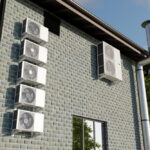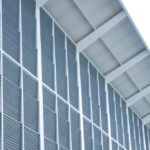VRF AC is an immensely powerful air conditioner used for refrigerating the temperature within a commercial or industrial building. The heating and cooling requirements of different zones within a building change most of the time.
A well-designed VRF AC can easily manage these heating and cooling requirements that change throughout the day. It is the main reason VRF air conditioners are installed in commercial buildings.
So, if you own such a commercial space where you want to maintain the proper flow of hot and cold air, choose VRF AC.
How to Plan Fresh Air With VRF AC?
It’s important to have a proper installation plan to get the most out of these air conditioners. Here are some tips for successful installation:
Size Accuracy
When choosing the VRF AC, it’s important to make sure that the unit size meets the conditioning needs of the space. If it does not meet space requirements, the fan coil units would not be able to maintain setpoints.
Also, you require a separate make-up air unit with cooling and heating coils for the space that needs ventilation. The MAU unit will temper the outdoor air and provide it to the individual coils.
Analyze Additional Space and Cost
To deliver fresh air, you would require additional terminal boxes and ductwork. Along with this, you will need to build an air management system.
Consider Ventilation Needs
You need to consider the ventilation needs of the area where VRF AC is installed. Make sure that the room has operable windows so that proper ventilation is maintained. It’s important to ensure that the property has sufficient space for MAU installation.
Ensure the BMS can Communicate
If you wish to proprietary the VRF AC unit using BACnet-enabled BMS, make sure the AC unit has an adapter. The adapter will establish communication between the two units.
If you do not have an adapter, your building workers would have to look after two separate front ends for running the HVAC system in the building perfectly.
Maintenance
When it comes to VRF AC and fresh air, planning proper maintenance is extremely important. Make sure that you schedule maintenance every six months. But if the system calls for much frequent maintenance, do not ignore it. Fresh air units often have replaceable or washable filters that need to be maintained regularly.
Since the building has multiple refrigerants running from the condenser, detecting and locating refrigerant leaks is difficult. And in case the leak occurs in a confined space with inadequate ventilation or in an indoor fan coil unit, the parts would be needed to disassemble. Keep provisions for appropriate trap doors and shafts helps in the process.
Planning a Fresh Air Along with VRF AC
If you think that a particular AC unit is a good fit for the building, you must purchase it. Adding a fresh air unit should also be planned at the same time. Ideally, an HVAC consultant can guide you through the process.
Also, you must purchase the fresh air and VRF AC unit from a reliable company. And get the installation service from professionals such as Newton.
The 25+ years of design, construction, and interior design experience ranks Newton Services among the top workshops in Delhi NCR.
To get in touch with the team, reach out at +91 87663 05479 or fill out the form on https://newtonservices.in/contact/.



